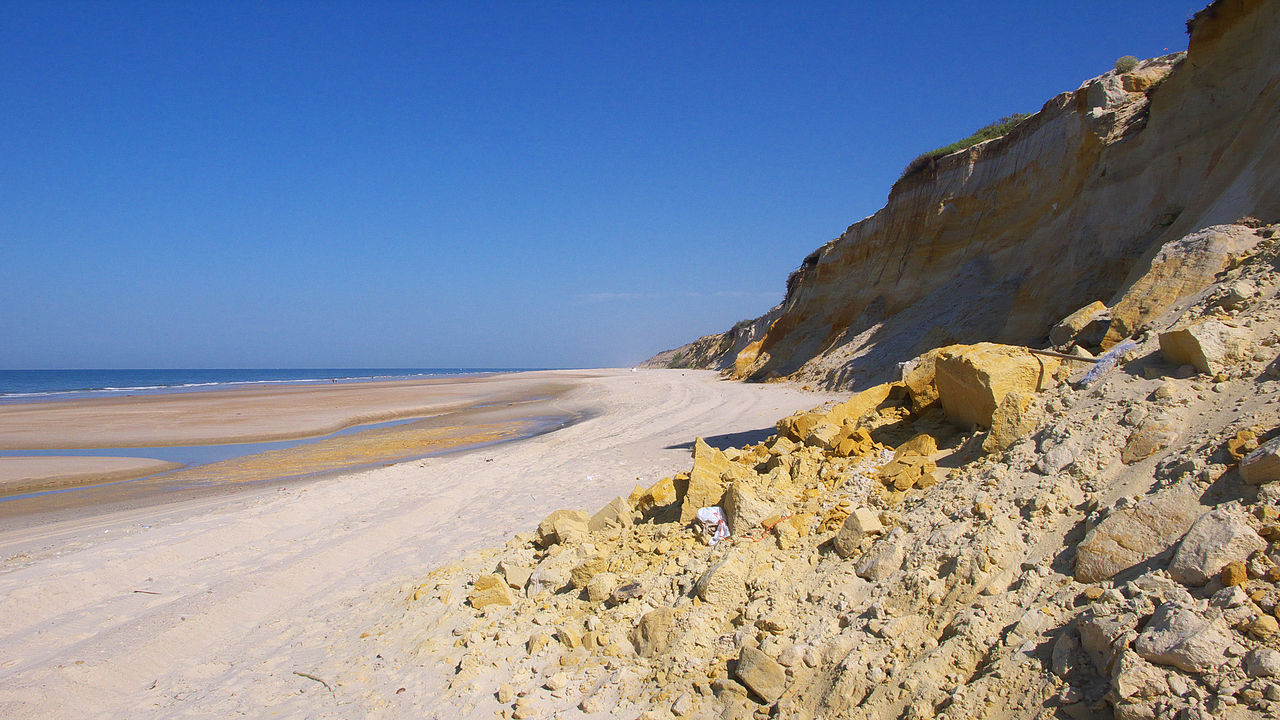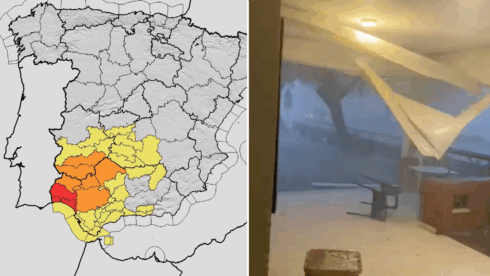TWO biologists from the Doñana National Park have accidentally stumbled across one of the largest deposits of prehistoric footprints known in Spain.
Dolores Cobo and Ana Mateos were walking along a stretch of the Huelva coastline between Matalascañas and Mazagon which is normally covered by sand and debris.
However a change in sea currents and strong winds cleared the rocky outcrop known as the ‘Asperillo’, revealing the impressive fossils for the first time in thousands of years.
The pair immediately understood what they were faced with, and sent photographs to Eduardo Mayoral, professor of paleontology at the University of Huelva.
“This example is certainly unique due to its size, I do not know of another such outcrop in Spain” said Mayoral.

Although it is unclear on the type of animal that left the tracks, the clearly ‘hoof’ shaped imprints suggest it was a type of deer or cow, perhaps of the Camelid species.
According to past research done on the soils in the area, Mayoral and other experts can estimate the age of the imprints.
“There is a possibility that these findings are roughly 100,000 years old,” said Mayoral.
Due to the nature of the location of the fossils and the ever encroaching tide, the imprints will once again be covered over in the coming weeks, making it difficult to conduct more studies or even remove them to place in a museum.
However Mayoral and his team are pleased with what the discovery represents for the Doñana area.
He said: “We are pleased that the finding contributes to providing great information on the species that inhabited Doñana many years ago and the habitats that had remained hidden until now.”
The findings also represent an important case for the protection of the site, which is currently under a controversial legal battle between Seprona and the Councillor of Urbanisation in Huelva, Jose Miguel Espina.
Last year, Espina, along with two businessmen, trekked across the dunes on horseback, causing irreparable damage to the fragile ecosystem of the Asperillo Natural Monument.
Click here to read more News from The Olive Press.








